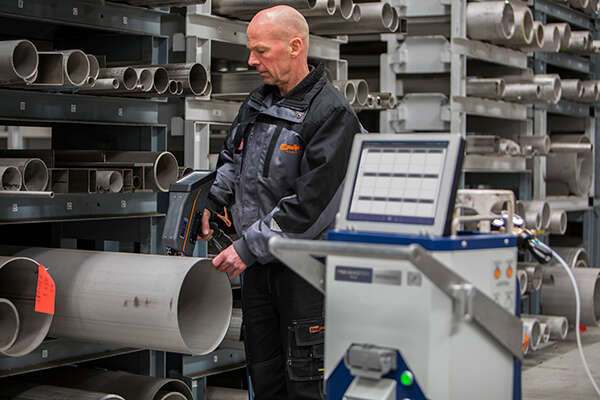The manufacturing landscape is embracing the Fourth Industrial Revolution. Introduced decades ago, Industry 4.0 continues to gain significance in our interconnected world. This evolution, akin to the major advancements since the first industrial revolution in 1784, combines the best of the past with contemporary technology.
Although Industry 4.0 is often associated with digitalization, big data, and smart manufacturing, the connection to PMI (positive material identification) testing isn't always highlighted. Across industrial eras, essential components from previous revolutions remain relevant, and novel ideas and technology enhance productivity in existing manufacturing processes. Quality control becomes even more crucial with the advent of smart factories and production.
In an era of complete process automation and integration into the Internet of Things (IoT), ensuring accurate product outcomes relies on quality control. This involves revealing the elemental composition of incoming and outgoing materials through cutting-edge spectrometer technology.

The concept of Industry 4.0 was first proposed around 2007 in Germany, building on the automation, computer-driven systems and electronics that were the keystones of Industry 3.0. Industry 4.0 is not a new theory, but the next logical innovation in manufacturing and production.
The aim of Industry 4.0 is to bring intelligence, connectivity, data driving, and automation to individual manufacturing processes with the goal of having a global competitive smart factory. While PMI and Quality Control, QC for short, were already introduced in Industry 3.0, the core concept of Quality 4.0 is to align the practice of quality management with the emerging capabilities of Industry 4.0 to help drive organizations toward operational excellence.
A quality system built to Industry 4.0 requirements will measure and send data instantly across its network to enable minor changes to be made in real time within the same production cycle.
The bottom line is that Quality 4.0 is an integral part of Industry 4.0 by constructing a quality control process that allows for effortless data driven connectivity. It demands that the technology matches the industry need for instantaneous changes, based on real time data and a proactive approach to manufacturing. This involves the entire supply chain process from incoming material inspection to outgoing material inspection.
Elemental analysis in manufacturing and fabrication is important. Quite often, when a smart factory and smart production is implemented, very little or no consideration is given to PMI and QA/QC of products and this can cause unexpected consequences – if a “non-tested” product fails in its service.
However, the issues that are avoided by elemental analysis techniques are just as relevant as ever in a smart factory:
So when a manufacturing process is completely automated, with little to no human intervention, the only way to ensure the right product emerges at the end is by checking the elemental composition of incoming and outgoing materials. Ideally at every step of the process where the composition is likely to change. The analytical equipment chosen to integrate with these steps must be in-situ (i.e. not off-site) and be able to give precise elemental information immediately at each stage. This information must then be transmitted across the network for immediate review and real-time process feedback.
In a metals processing, foundry, fabrication or manufacturing plant the most reliable way to integrate analysis across the process is to choose the right technique for the right job. As there is not one ‘right’ technique for the ’right’ job, often companies look for complementary technologies.
For example, non-destructive testing of finished components will need to use XRF technology as that’s the only one that leaves the surface completely residue free. Testing to verify that incoming material matches the expected grade can be completed by LIBS or Spark-OES technology, as it has been defined in the ASTM 1476. However, for complete metals elemental analysis, including carbon, phosphorous, sulfur, nitrogen, oxygen, hydrogen detection, companies must use spark OES.
Our range of XRF, LIBS and spark OES analyzers work together to ensure right material, right place from goods-in to goods-out and every step in-between.
And real-time connectivity of these instruments is delivered through our ExTOPE Connect data management solution that connects all enabled devices to a centralized point. The devices don’t even have to be in the same facility, or even the same country. ExTOPE Connect works across the globe, giving you the level of connectivity, you need to make Quality 4.0 a reality in your organization.
Want to find out more?
Get in touch with one of our experts to arrange your demo or quote.
You might be interested also in: